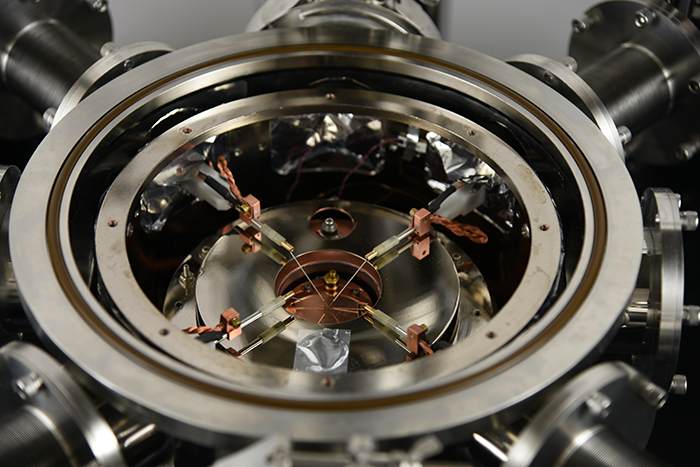Quantum Computing
Optical Qubits
Harnessing the photon as a quantum information carrier, optical quantum computers rely on ultra stable experimental conditions at low temperature.
ARS’ Ultra-Low Vibration Cryostats are optimized for photonic qubit, nitrogen-vacancy centers, and quantum dots, due to:
Ultimate Sample Stability Relative to the Optical Table, isolating cryocooler vibrations and mechanical drift to the nanometer scale.
Low Working Distance and Low Beam Height Transmission-Mode Optics, seamlessly integratable into complex optical setups.
Endlessly Configurable Sample Chamber, featuring multiple large windows, in-vacuum objectives, and sample motion.
Superior Cryogenics, building on over 30 years of cryostat development.
Superconducting Qubits
When cooled to a sufficiently low temperature, materials in superconducting quantum computers such as Niobium reach a state of zero electrical resistance.
To meet these temperature needs, ARS designs and builds cryogenic probe stations suited for rapid characterization with the following advantages:
Fast Vacuum Pumping, Cooldown and Warmup, completing a full sample exchange of a 4” wafer in as little as 130 minutes.
Advanced Probe Thermalization, allowing <5K sample temperatures with four probes in contact.
Unmatched build quality, made of fully-welded stainless-steel vacuum chambers and house-built micromanipulators.
Trapped Ion Qubits
Manipulating the electron states of individual atoms requires a cold, stable environment in a pristine vacuum.
ARS offers a wide range of suitable UHV cryostats for ion trapping, featuring:
True Ultra-High Vacuum Chambers, including all welded stainless-steel connections, and metal seals rated to 1e-12 mbar.
Ultra-Low Vibrations, minimizing coldhead vibrations below 5 nm, peak-to-peak.
High cooling power, efficiently overcoming the high heat loads of demanding applications.
Quantum Control Electronics (Cryo-CMOS)
Developing electronics to control qubits often involves repeated iteration and testing.
Scale-up faster with our cryogenic electrical characterization platforms, specialized for:
Rapid Cooldown, reaching < 3.0K in as short as 75 minutes.
Large, customizable breadboards, allowing numerous samples to be mounted flexibly.
Numerous measurement wires, ranging from low-heat load DC lines to high frequency RF cables.
Spin Qubits
Semiconductor quantum dots can be controlled by magnetic fields in cryogenic, low-noise environments.
Our cryogenic probe stations and cryostats are equipped with:
Strong magnetic fields, available up to 6T within the sample chamber.
Low-noise, biasable sample plates, isolated with coaxial or triaxial shielding.





